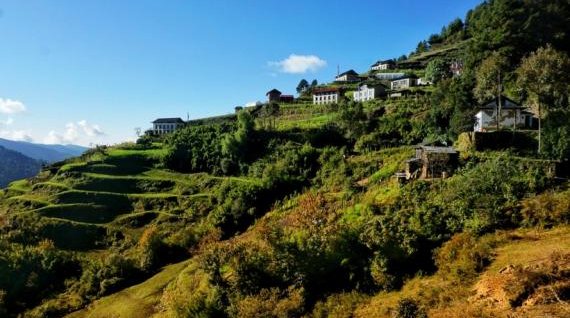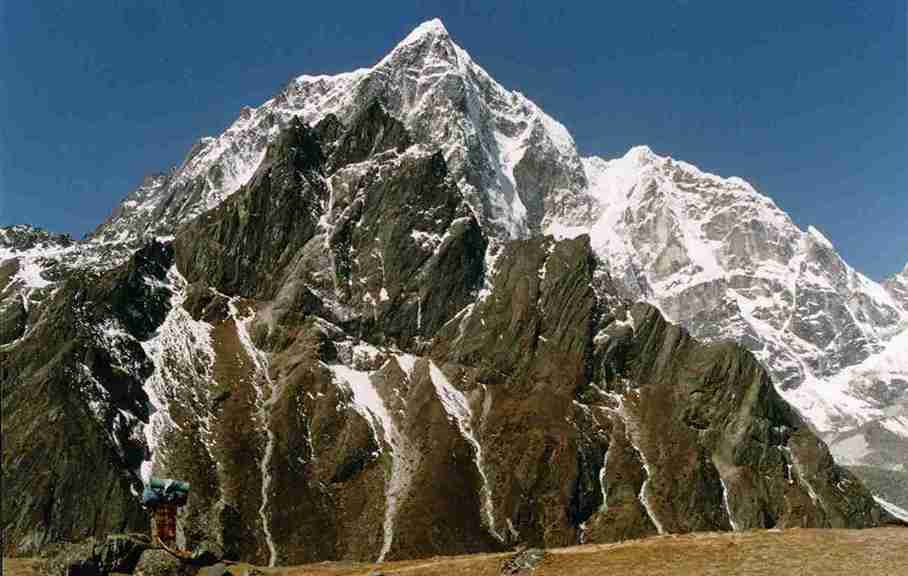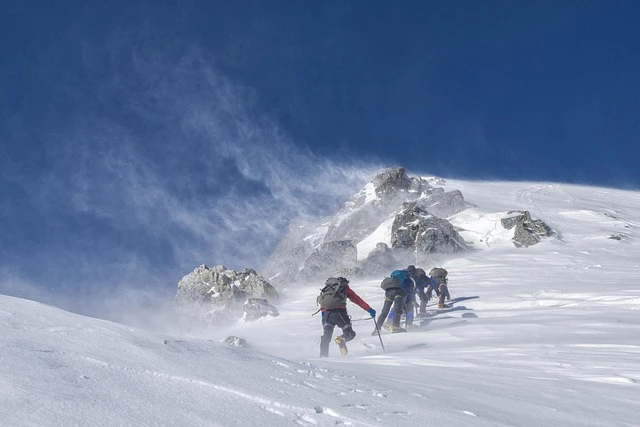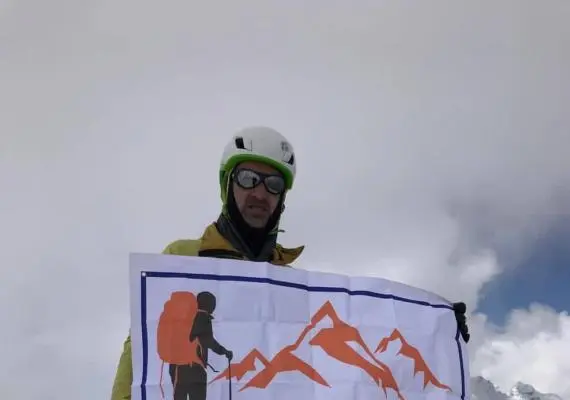Are you seeking an authentic Himalayan adventure that combines breathtaking mountain vistas with deep cultural immersion? The Jiri to Everest Base Camp trek offers an extraordinary alternative to the conventional Lukla route, taking you through the historic path that Sir Edmund Hillary and Tenzing Norgay once walked. This comprehensive guide covers everything you need to know about the Jiri to EBC trek, from detailed itinerary planning to essential permits, costs, and cultural insights that make this journey truly unforgettable.
The Everest Base Camp trek from Jiri provides unparalleled scenic and cultural immersion, allowing trekkers to experience gradual acclimatization while exploring traditional Sherpa, Rai, and Tamang villages that remain largely untouched by mass tourism. Whether you're planning your first Himalayan adventure or seeking a more authentic EBC experience, this guide will help you understand why the Jiri route deserves serious consideration for your 2025 trekking plans.
Why Choose the Jiri Route Over the Traditional Lukla Flight?
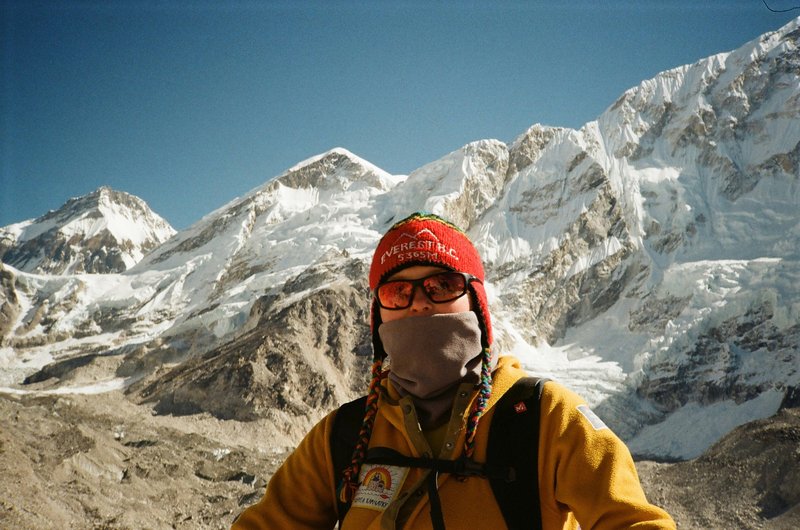
The Jiri to Everest Base Camp trek stands out as the original and most rewarding path to the world's highest mountain base camp. While most trekkers today opt for the convenient Lukla flight, the Jiri route offers several compelling advantages that make it the preferred choice for serious adventurers and cultural enthusiasts.
Gradual Acclimatization Benefits
Starting from Jiri at 1,905 meters provides superior acclimatization compared to flying directly to Lukla (2,860 meters). This gradual ascent significantly reduces the risk of altitude sickness and allows your body to adapt naturally to increasing elevation. The Jiri EBC acclimatization guide principle ensures you gain altitude slowly while building physical endurance over the first week of trekking.
Cultural Immersion and Historical Significance
The Jiri route takes you through authentic traditional Sherpa, Rai, Tamang villages where local customs remain largely unchanged. Unlike the commercialized Lukla route, you'll experience genuine cultural exchanges, witness traditional farming practices, and stay in family-run teahouses that offer intimate glimpses into mountain life. This path follows the historic route used by early Everest expeditions, connecting you directly with mountaineering history.
Fewer Crowds and Pristine Wilderness
While the Lukla route can feel crowded, especially during peak seasons, the Jiri to EBC trek offers a more secluded experience. You'll encounter fewer trekkers, enjoy peaceful mornings, and have better opportunities for wildlife observation and photography. The first week particularly provides solitude that enhances the overall trekking experience.
Better Physical Preparation
The additional days of trekking from Jiri serve as excellent physical preparation for the higher altitude challenges ahead. Your legs and cardiovascular system gradually adapt to long days of hiking, making the later stages to Everest Base Camp more manageable and enjoyable.
Key Highlights and Benefits of the Jiri to EBC Trek
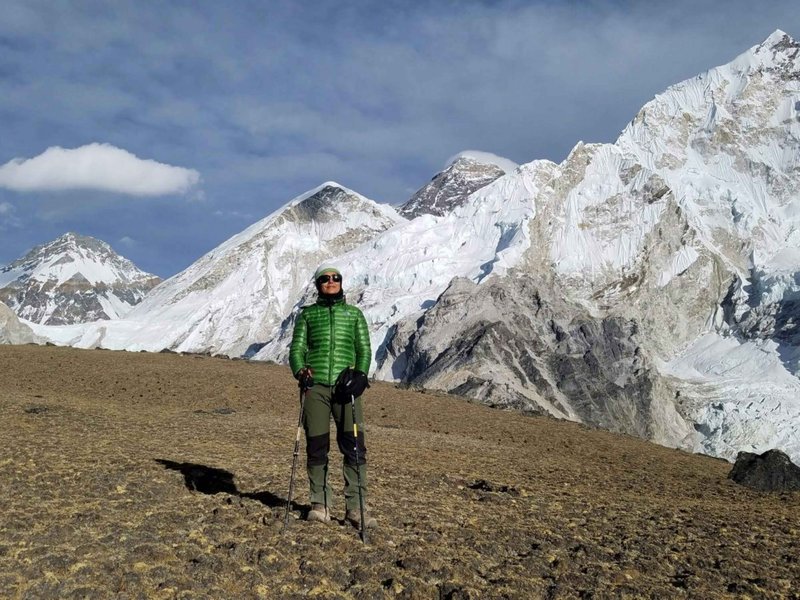
Scenic Diversity and Natural Beauty
The Jiri to Everest Base Camp trek showcases Nepal's incredible biodiversity and geological variety. Starting in subtropical valleys, you'll trek through:
- Rhododendron forests that bloom spectacularly in spring (March-May)
- Dense oak and pine forests with diverse wildlife
- Alpine meadows dotted with wildflowers
- Glacial valleys and moraines leading to base camp
- Sagarmatha National Park flora and fauna including blue sheep, Himalayan tahr, and over 100 bird species
Cultural Richness and Village Life
Experience authentic mountain culture through:
- Traditional Sherpa, Rai, Tamang villages with unique architectural styles
- Local festivals and religious ceremonies at monasteries
- Traditional farming practices and terraced agriculture
- Yak herding communities and cheese-making traditions
- Ancient trade routes connecting Tibet and Nepal
Photography and Adventure Opportunities
The route offers exceptional photography opportunities including:
- Sunrise views over Everest, Lhotse, and Makalu
- Traditional village life and cultural portraits
- Diverse landscapes from subtropical to alpine
- Wildlife photography in Sagarmatha National Park
- Ancient monasteries and spiritual sites
Personal Achievement and Spiritual Journey
Completing the Jiri to EBC trek provides:
- Greater sense of accomplishment due to increased distance and duration
- Deeper spiritual connection with the Himalayan environment
- Enhanced cultural understanding and appreciation
- Improved physical fitness and mental resilience
- Memories of authentic cultural exchanges
Permits and Costs: Essential Information for 2025
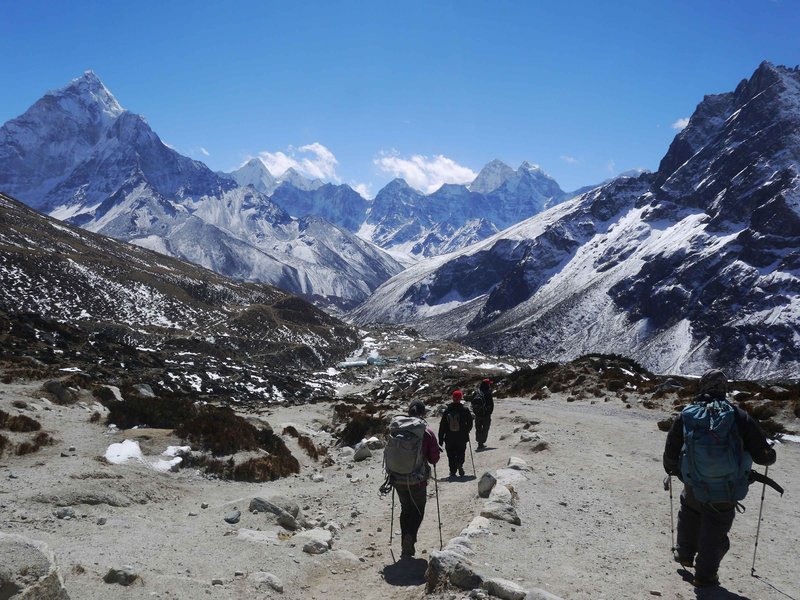
Required Permits
Planning your Jiri to Everest Base Camp trek requires obtaining specific permits:
Sagarmatha National Park Permit
- Cost: NPR 3,000 (approximately USD 25) for foreigners
- Purpose: Access to Sagarmatha National Park, required from Monjo onwards
- Validity: Single entry, valid for the duration of your trek
- Obtained: Kathmandu or Monjo entrance gate
TIMS Card (Trekkers' Information Management System)
- Cost: NPR 1,000 (approximately USD 8) for individual trekkers
- Purpose: Tracking and safety purposes
- Validity: Covers entire trekking duration
- Obtained: Nepal Tourism Board office in Kathmandu
Jiri to EBC Trek Cost 2025
The Jiri to EBC trek cost 2025 varies depending on services chosen:
Budget Option (Independent Trekking)
- Daily costs: USD 25-35 per day
- Accommodation: Teahouse lodges (USD 5-10 per night)
- Meals: Local dal bhat and international dishes (USD 8-15 per meal)
- Total estimated cost: USD 600-800 for 18-20 days
Mid-Range Option (With Guide)
- Daily costs: USD 50-70 per day
- Includes: Licensed guide, porter, better accommodations
- Total estimated cost: USD 1,200-1,500 for 18-20 days
Premium Option (Full Service)
- Daily costs: USD 80-120 per day
- Includes: Jiri EBC trek with certified guide, porter, premium lodges, comprehensive support
- Total estimated cost: USD 2,000-2,500 for 18-20 days
Additional Costs to Consider
- Transportation: Kathmandu to Jiri (USD 15-25)
- Gear rental: USD 200-300 for complete setup
- Insurance: Comprehensive travel and evacuation insurance
- Tips: Guides (USD 8-10 per day), porters (USD 5-7 per day)
- Personal expenses: Snacks, hot showers, wifi, charging devices
Learn more in our in-depth guide covering the complete cost breakdown of the Jiri to Everest Base Camp trek
Altitude Profile and Acclimatization: Your Safety Guide
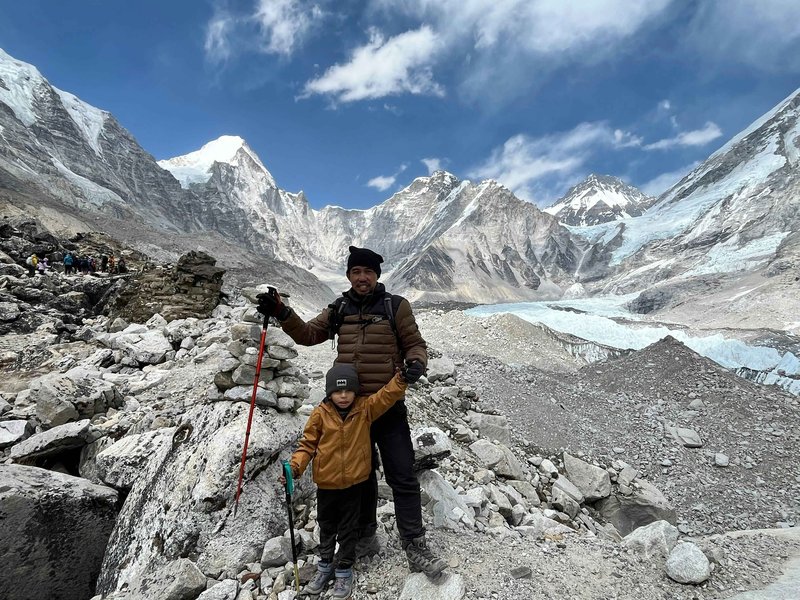
Understanding the Altitude Challenge
The Jiri to Everest Base Camp trek involves significant altitude gain over 18-20 days. While the gradual ascent from Jiri provides better acclimatization than flying to Lukla, understanding altitude effects remains crucial for safety and enjoyment.
Altitude Progression and Key Elevations
Week 1: Jiri to Namche Bazaar
- Jiri: 1,905m - Starting point with comfortable elevation
- Shete: 2,400m - First significant altitude gain
- Junbesi: 2,700m - Important acclimatization stop
- Namche Bazaar: 3,440m - Gateway to Khumbu region
Week 2: Namche to Dingboche
- Tengboche: 3,867m - First rest day location
- Dingboche: 4,410m - Crucial acclimatization village
- Chhukung: 4,730m - Optional acclimatization hike
Week 3: Dingboche to Base Camp
- Lobuche: 4,940m - Final approach preparation
- Gorak Shep: 5,164m - Highest sleeping point
- Everest Base Camp: 5,364m - Ultimate destination
Jiri EBC Acclimatization Guide Principles
Follow the Golden Rules:
- Ascend slowly, sleep low when possible
- Stay hydrated (4-5 liters daily above 3,000m)
- Avoid alcohol and sleeping pills
- Recognize altitude sickness symptoms immediately
- Take mandatory rest days in Namche and Dingboche
Warning Signs to Watch:
- Persistent headaches despite medication
- Nausea and vomiting
- Extreme fatigue and weakness
- Difficulty sleeping or loss of appetite
- Confusion or coordination problems
Larkya La Pass Difficulty and Alternative Routes
Note: The Larkya La pass difficulty reference typically applies to the Manaslu Circuit trek, not the Jiri to EBC route. However, the Jiri route does involve several challenging passes:
Taksindu La (3,071m): First major pass with moderate difficulty Renjo La (5,340m): Optional side trip requiring technical preparation Cho La (5,420m): Advanced trekkers only, requires experience
Medical Preparation and Emergency Protocols
Pre-Trek Medical Consultation:
- Physical fitness assessment
- Discuss altitude sickness medications (Diamox)
- Cardiac and respiratory health evaluation
- Vaccination requirements (Hepatitis A/B, Typhoid)
Emergency Evacuation Planning:
- Comprehensive travel insurance with helicopter evacuation
- Emergency contact protocols
- Understanding of evacuation procedures from remote locations
- Satellite communication devices for emergencies
Best Time for Jiri to EBC Trek: Seasonal Considerations
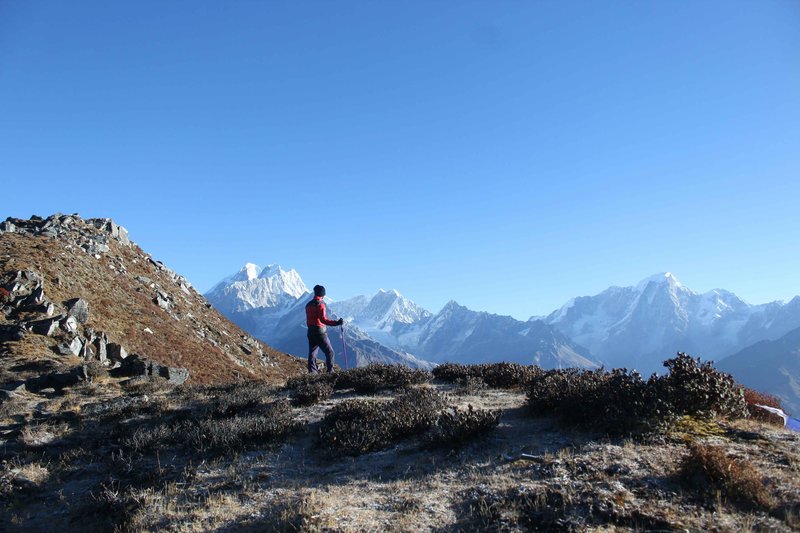
Spring Season (March-May): Peak Trekking Period
Advantages:
- Rhododendron blooms: Spectacular forest displays throughout the route
- Stable weather patterns with clear mountain views
- Warm daytime temperatures ideal for trekking
- Excellent visibility for photography and mountain viewing
- Comfortable sleeping conditions in teahouses
Considerations:
- Higher trekker numbers, especially in April-May
- Increased accommodation costs during peak season
- Potential for afternoon thunderstorms
- Warmer temperatures at lower elevations
Recommended Gear: Spring-specific packing includes lighter sleeping bags, rain protection, and sun hats.
Autumn Season (September-November): Optimal Conditions
Advantages:
- Crystal-clear mountain views with minimal cloud cover
- Stable weather patterns and minimal precipitation
- Comfortable temperatures for trekking
- Post-monsoon clean air and excellent visibility
- Reliable teahouse operations
Considerations:
- Peak season pricing and crowding
- Colder nighttime temperatures at higher elevations
- Potential for early winter storms in late November
- Higher demand for permits and guides
Recommended Gear: Autumn requires warmer sleeping systems and layered clothing for temperature variations.
Winter Season (December-February): Advanced Trekkers Only
Challenges:
- Extreme cold temperatures, especially at higher elevations
- Potential snow blocking high passes
- Limited teahouse operations above Namche
- Shorter daylight hours for trekking
- Increased risk of altitude-related complications
Advantages:
- Fewer crowds and lower costs
- Crystal-clear mountain views
- Unique winter landscape photography
- Cultural immersion opportunities in lower villages
Monsoon Season (June-August): Not Recommended
Significant Challenges:
- Heavy rainfall and flooding risks
- Obscured mountain views due to clouds
- Increased risk of landslides and trail damage
- Leeches and challenging trail conditions
- Flight cancellations and transportation delays
Guide vs Solo Trekking: Making the Right Choice
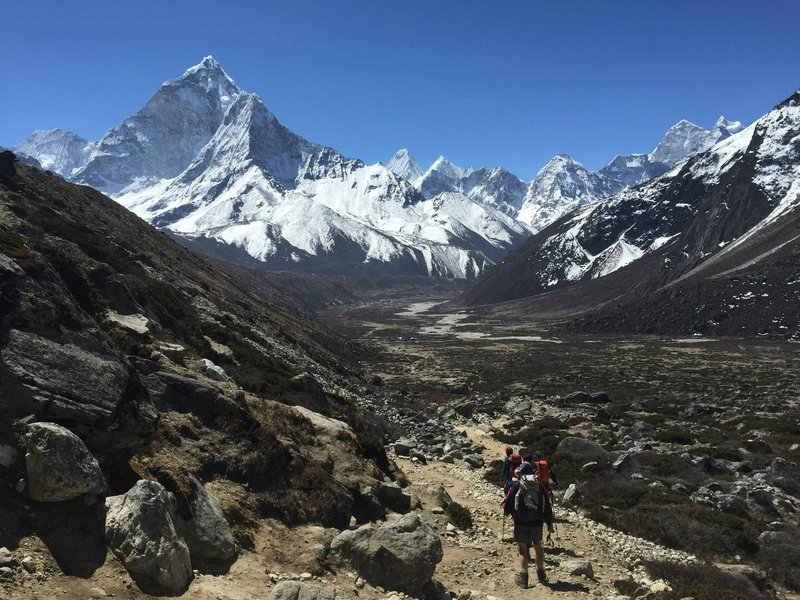
Benefits of Hiring a Certified Guide
Safety and Emergency Support:
- Jiri EBC trek with certified guide provides immediate medical assistance
- Local knowledge of weather patterns and trail conditions
- Emergency evacuation coordination and first aid expertise
- Navigation assistance in challenging terrain
- Cultural interpretation and language support
Cultural and Educational Value:
- Deep insights into local customs and traditions
- Access to authentic cultural experiences
- Historical context and geological information
- Wildlife identification and nature interpretation
- Photography guidance and location scouting
Logistics and Convenience:
- Accommodation booking and meal ordering
- Permit assistance and paperwork handling
- Route planning and itinerary adjustments
- Porter coordination and gear management
- Transportation arrangements
Solo Trekking Considerations
Advantages:
- Complete flexibility in itinerary and pace
- Lower overall costs
- Personal challenge and self-reliance
- Intimate connection with the environment
- Freedom to make spontaneous decisions
Challenges and Risks:
- Navigation difficulties in remote areas
- Language barriers in local villages
- Emergency situations without immediate support
- Cultural misunderstandings and etiquette issues
- Increased risk during altitude-related emergencies
Also, check out our detailed guide to the more challenging Everest 3 Pass trek. and the Pikey Peak trek.
Legal Requirements and Regulations
Current Regulations (2025):
- Solo trekking is permitted but not recommended for safety
- Licensed guide requirement for certain protected areas
- Porter regulations and fair wage guidelines
- Insurance requirements for commercial operators
- Environmental protection compliance
Choosing the Right Guide Service
Certification and Qualifications:
- Nepal Mountain Association (NMA) certification
- First aid and wilderness training
- English language proficiency
- Cultural sensitivity and communication skills
- Previous EBC route experience
Service Inclusions:
- Pre-trek briefing and gear check
- Daily route planning and weather updates
- Cultural site visits and monastery tours
- Photography assistance and location guidance
- Post-trek feedback and recommendations
Cultural and Nature Insights: Immersive Experiences
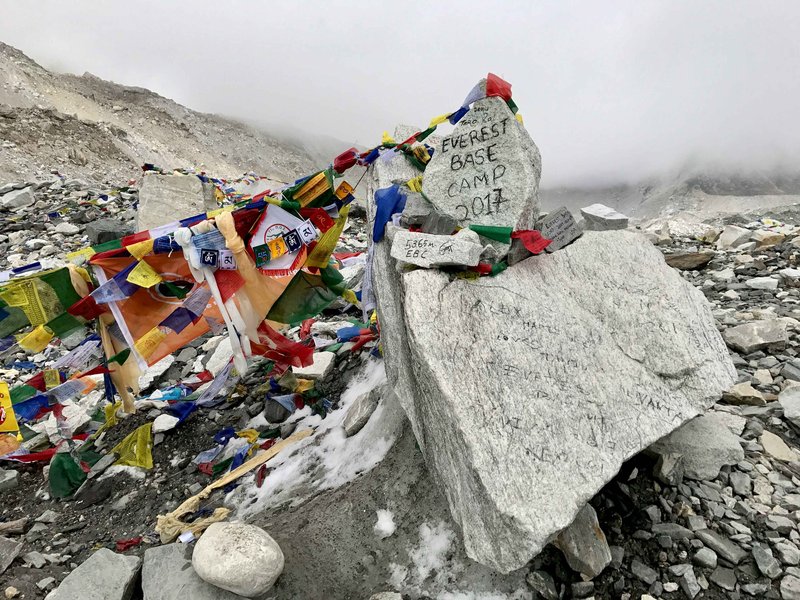
Traditional Villages and Cultural Heritage
Sherpa Communities: The Jiri to Everest Base Camp cultural villages showcase the rich heritage of Sherpa people, renowned for their mountaineering prowess and deep spiritual connection to the Himalayas. In villages like Junbesi and Tengboche, experience:
- Traditional stone houses with intricate woodwork
- Buddhist monasteries with ancient artifacts
- Yak herding practices and cheese production
- Sherpa hospitality and cultural ceremonies
- Traditional festivals like Dumji and Mani Rimdu
Rai and Tamang Communities: The lower sections of the trek introduce you to Rai and Tamang cultures:
- Terraced agriculture and traditional farming methods
- Unique architectural styles and village layouts
- Traditional crafts, including weaving and pottery
- Shamanic practices and spiritual beliefs
- Local festivals and cultural celebrations
Sagarmatha National Park Flora and Fauna
Biodiversity Highlights: The Sagarmatha National Park flora and fauna represent one of Nepal's most diverse ecosystems:
Wildlife Species:
- Blue sheep (bharal) grazing on alpine slopes
- Himalayan tahr with impressive curved horns
- Musk deer in forested areas
- Snow leopard (rare sightings in upper regions)
- Himalayan black bear in lower forests
Bird Species:
- Himalayan monal (national bird of Nepal)
- Blood pheasant in rhododendron forests
- Lammergeier (bearded vulture) soaring above
- Snow cock in alpine zones
- Over 100 recorded bird species
Vegetation Zones:
- Subtropical forests (1,000-2,000m): Sal, oak, and bamboo
- Temperate forests (2,000-3,000m): Rhododendron, fir, and juniper
- Alpine zone (3,000-4,000m): Dwarf shrubs and hardy perennials
- Nival zone (above 4,000m): Sparse vegetation and hardy grasses
Monastery Visits and Spiritual Experiences
Tengboche Monastery:
- Founded in 1916, the spiritual center of the Khumbu region
- Daily prayer ceremonies and meditation sessions
- Ancient manuscripts and religious artifacts
- Panoramic views of Everest, Lhotse, and Ama Dablam
- Opportunity to receive blessings from resident monks
Thyangboche and Junbesi Monasteries:
- Historical significance and architectural beauty
- Traditional Buddhist art and sculptures
- Meditation retreats and spiritual discussions
- Local festivals and religious celebrations
- Cultural photography opportunities
Traditional Crafts and Local Industries
Yak Herding and Dairy Production:
- Traditional yak herding practices
- Cheese-making techniques and tasting opportunities
- Yak wool products and traditional clothing
- Seasonal migration patterns
- Economic importance to local communities
Agriculture and Food Culture:
- Terraced farming systems on steep slopes
- Traditional crops: barley, potatoes, buckwheat
- Organic farming practices and crop rotation
- Local food preparation and cooking methods
- Seasonal harvesting and storage techniques
Gear and Packing Advice: Essential Equipment Guide
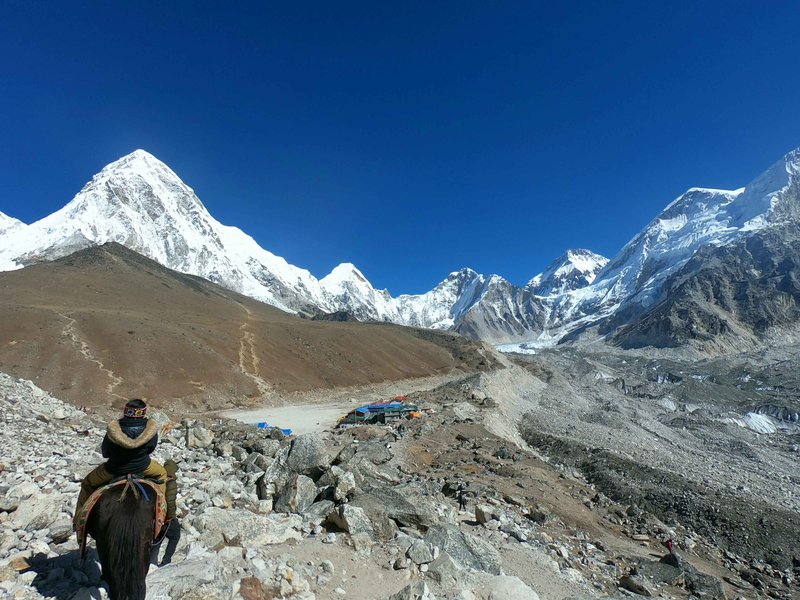
Season-Specific Packing Lists
Jiri to EBC Trek Packing List Spring (March-May):
Clothing Essentials:
- Lightweight base layers (merino wool recommended)
- Insulating layers for temperature variation
- Waterproof and breathable outer shell
- Warm hat and sun hat
- Insulated gloves and liner gloves
- Hiking pants and shorts
- Warm socks and liner socks
Footwear:
- Broken-in hiking boots with ankle support
- Lightweight camp shoes or sandals
- Gaiters for protection from debris
- Extra laces and boot maintenance kit
Technical Equipment:
- Sleeping bag rated to -10°C (14°F)
- Sleeping pad for insulation and comfort
- Trekking poles for stability and joint protection
- Headlamp with extra batteries
- Water purification tablets or a filter
- Personal first aid kit
Teahouse vs Camping Jiri Trek Equipment
Teahouse Trekking Advantages:
- Reduced pack weight and equipment needs
- Daily meal service and social interaction
- Shelter from weather and comfortable sleeping
- Charging facilities and basic amenities
- Local economic support and cultural exchange
Essential Teahouse Gear:
- Personal sleeping bag and pillow
- Water bottles and purification system
- Personal hygiene items and medications
- Warm clothing for cold teahouse interiors
- Portable charger for electronic devices
Camping Trek Considerations:
- Complete self-sufficiency and flexibility
- Enhanced wilderness experience
- Higher cost due to equipment and staff needs
- Environmental impact considerations
- Weather dependency and setup challenges
Gear Rental vs Purchase Decisions
Recommended Rental Items:
- Sleeping bags (high-quality, regularly cleaned)
- Down jackets (expensive, bulky for travel)
- Trekking poles (airline restrictions)
- Duffel bags and porter packs
- Crampons and technical gear (if needed)
Recommended Purchase Items:
- Hiking boots (proper fit essential)
- Base layers and hiking clothing
- Personal hygiene and medical items
- Water bottles and treatment systems
- Headlamp and personal electronics
Packing Tips and Weight Management
Pack Organization:
- Use compression sacks for clothing
- Keep essentials in easily accessible pockets
- Waterproof important items in dry bags
- Distribute weight evenly in the backpack
- Pack heaviest items close to your back
Weight Guidelines:
- Main pack: 12-15kg (26-33 lbs) maximum
- Daypack: 5-8kg (11-18 lbs) for daily essentials
- Porter duffel: 15kg (33 lbs) maximum per regulations
- Personal carrying capacity: 20-25% of body weight
Planning Your Jiri to Everest Base Camp Trek
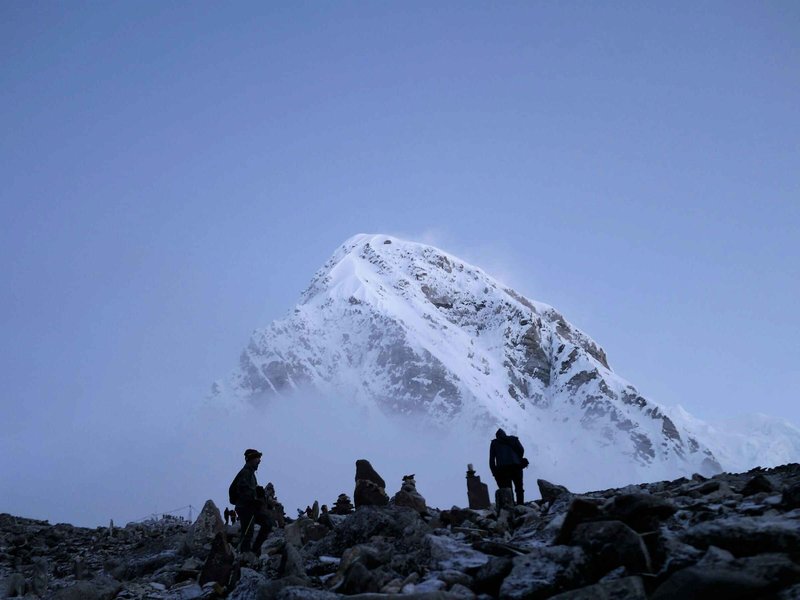
Comprehensive Trek Planning Services
Planning your Jiri to Everest Base Camp trek requires careful consideration of multiple factors to ensure a safe, enjoyable, and culturally enriching experience. Our expert team provides comprehensive planning services that cover every aspect of your Himalayan adventure.
Pre-Trek Consultation:
- Jiri to Everest Base Camp trek itinerary customization based on your fitness level and interests
- Physical preparation guidance and training recommendations
- Gear selection and rental arrangements
- Permit processing and documentation assistance
- Cultural briefing and etiquette guidance
During Trek Support:
- Jiri EBC trek with certified guide providing safety and cultural insights
- Daily route planning and weather monitoring
- Emergency response protocols and evacuation planning
- Cultural site visits and monastery tours
- Photography guidance and location scouting
Post-Trek Services:
- Gear cleaning and return assistance
- Cultural souvenir shopping guidance
- Kathmandu sightseeing and relaxation options
- Trip feedback and photo sharing
- Future trek planning and recommendations
For more detailed information, check out our guide on Jiri to Everest Base Camp trek itinerary.
Why Choose Our Certified Guide Service
Safety and Expertise:
- Licensed guides with extensive EBC route experience
- Wilderness first aid and emergency response training
- Weather monitoring and route adjustment capabilities
- Cultural sensitivity and environmental awareness
- Comprehensive insurance and emergency evacuation support
Cultural Authenticity:
- Deep knowledge of local customs and traditions
- Language skills for authentic cultural exchanges
- Connections with local communities and families
- Traditional ceremony participation opportunities
- Sustainable tourism practices and community support
Personalized Service:
- Small group sizes for intimate experiences
- Flexible itinerary adjustments based on group needs
- Photography assistance and location guidance
- Personal attention to safety and comfort
- Customized cultural and adventure activities
Booking Process and Support
Simple Booking Steps:
- Initial Consultation: Discuss your trek preferences, fitness level, and cultural interests
- Itinerary Planning: Customize your Jiri to Everest Base Camp trek itinerary based on available time and interests
- Permit Processing: Handle all required permits and documentation
- Gear Preparation: Provide detailed packing lists and rental arrangements
- Pre-Trek Briefing: Comprehensive orientation covering safety, culture, and expectations
Ongoing Support:
- 24/7 emergency contact during trek
- Regular check-ins with base operations
- Weather updates and route modifications
- Cultural interpretation and learning opportunities
- Photography and memory-making assistance
Contact Information and Next Steps
Ready to embark on your Jiri to Everest Base Camp trek adventure? Our experienced team is here to help you plan the perfect Himalayan journey that combines adventure, culture, and personal achievement. For more information check out our package for the Everest Base Camp trek by road.
Special Offers for 2025:
- Early booking discounts for the spring and autumn seasons
- Group booking incentives for 4+ trekkers
- Comprehensive gear rental packages
- Cultural extension options in Kathmandu Valley
- Photography workshop add-ons with professional guides

